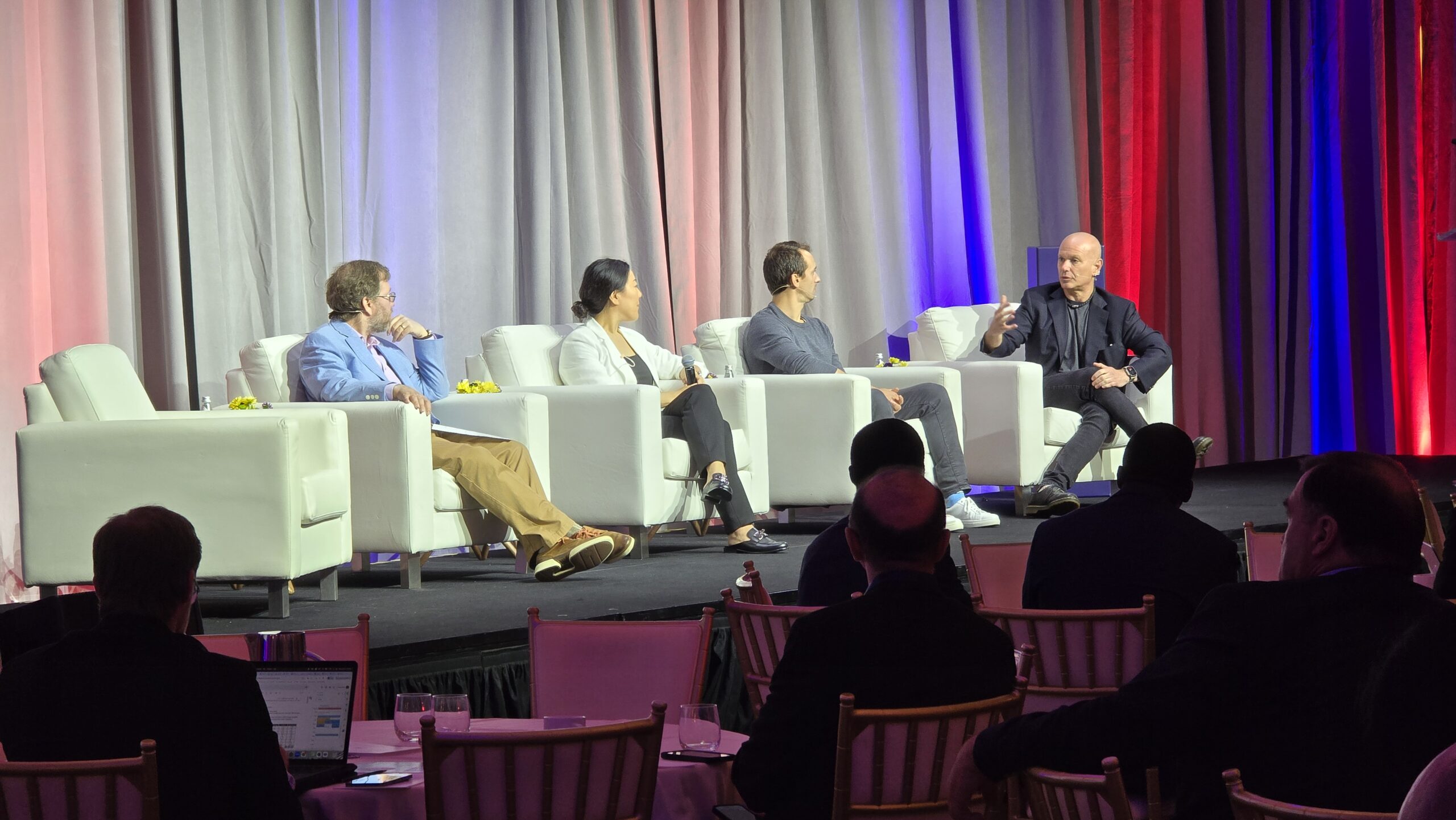At the AI+ Science Summit in Washington, D.C., the session titled “Case Study – AI+ Materials Science” brought together distinguished experts to discuss how artificial intelligence is reshaping materials science, from accelerating discovery to tackling long-standing industrial challenges. Moderated by Jake Yeston, Editor at Science magazine, this conversation featured James “Jim” Warren, Director of the Materials Genome Project at NIST; Lily Kim, General Manager of Microsoft Discovery; and Jake Guglin, CEO of Foundation Alloy.
A Decade of the Materials Genome Initiative: A Data-Driven Revolution
Jim Warren kicked off with a panoramic overview of the Materials Genome Initiative (MGI), a cross-government endeavor launched in 2011 to fundamentally accelerate how new materials are discovered, designed, and deployed. Central to MGI’s vision is the integration of computation, experimentation, and data, long before AI became a household term.
Warren recalled the pivotal moment when AI began to tangibly influence materials science, initial breakthroughs in phase diagram prediction that didn’t require crystallography data. Fast forward to today, and the surge in generative AI, exemplified by public attention to tools like ChatGPT, is driving a full-scale transformation of the field. AI empowers researchers to dramatically speed up discovery cycles and, crucially, link materials science with real-world manufacturing.
Entrepreneurship in Materials Science: AI as an Accelerant with Unique Data
Jake Guglin shared a contrarian but compelling perspective from the startup trenches. His company, Foundation Alloy, pursues a breakthrough approach to making metals, a departure from millennia-old methods, leveraging proprietary data sets amassed over years of experimentation. AI’s role here is an accelerant, not just an analytical tool, enabling rapid scaling of production from lab-scale kilograms to commercially viable volumes.
This proprietary data, constantly refined, forms a competitive moat: even the most advanced competitors would face years of catch-up. Guglin’s insight crystallizes a key lesson, AI paired with unique, high-quality data assets yields enduring advantage in materials innovation.
Microsoft’s Deep Investment: Bridging AI and Scientific Discovery
Lily Kim articulated Microsoft’s strategic bet: building on decades of investments in advanced computing and AI research, Microsoft Discovery harnesses HPC, quantum computing, and AI models to revolutionize scientific workflows. Their platform can accelerate the entire experimental process, from hypothesis generation to molecular identification and synthesis, creating a virtuous, iterative feedback loop.
Kim recounted notable successes, such as using AI-driven models alongside national laboratory partnerships to synthesize new battery materials with promising performance. The vision is clear: AI is no longer a supporting actor but a central orchestrator in scientific innovation.
Navigating the Tension Between Proprietary and Open Science
Jake Yeston probed the group on a perennial question, how to balance the proprietary interests of companies with the academic and public good ethos underpinning scientific data. Jim Warren underscored that while companies naturally protect business-critical data, there is a pressing need to embrace heterogeneity in data sharing frameworks. AI can harness shared, indexed public data in conjunction with private data to accelerate discovery while respecting necessary protections. This “hybrid” data ecosystem is essential for scaling the next wave of materials breakthroughs.
The Next Big Challenge: Scaling Novel Materials
Perhaps the most insightful observation came from Jake Guglin, who emphasized that while AI-driven discovery is exciting and highly publicized, the less glamorous but equally critical challenge is scaling new materials for practical use. Unlike software or digital products, manufacturing new materials at meaningful scales, think millions of units, requires overcoming unique physical and process-related hurdles.
To accelerate this “scale-up” phase, Guglin and the panelists pointed out the importance of integrating advanced AI with experimentation, process control, and industrial know-how, a frontier rich with opportunity but demanding multidisciplinary collaboration.
Addressing “Hallucination” in AI-Driven Material Science
Lily Kim discussed Microsoft’s efforts to tackle AI “hallucinations,” a known problem where AI models produce plausible but incorrect outputs. For material scientists, accuracy is paramount; a false positive can send months or years of costly experiments down dead ends.
Microsoft and collaborators employ “knowledge graphs” and domain-specific data indexing to ground AI outputs in verifiable data, substantially improving reliability. This technological rigor addresses a key barrier in adopting AI for materials research: trust.
Broad Challenges and Opportunities Ahead
Jim Warren highlighted the diverse range of materials science challenges, from metals and ceramics to emerging bio-materials, each with unique complexities. AI’s strengths in pattern recognition and active decision-making (selecting the next best experiment) can transform the notoriously slow and empirical process of materials optimization.
Jake Guglin closed the panel with a sobering but essential perspective: AI alone is not a silver bullet for winning competitive advantage. Sustainable leadership demands innovations that go beyond applying AI to existing problems. To outpace competitors, especially those with scale and capital advantages, American innovators must identify fundamentally new approaches, be it new materials or new manufacturing paradigms.
Final Takeaway: AI is a Powerful Tool, Not the Whole Toolbox
This insightful panel underscored a vital theme. AI’s meteoric rise is reshaping materials science, accelerating discovery, and offering new paths to commercialization. Yet, it thrives best as part of an integrated strategy combining unique data, proprietary know-how, manufacturing scale, and cross-sector collaboration.
Aspiring entrepreneurs and researchers should think beyond AI hype: focus on deep science, build defensible data assets, and embrace the long arc from invention to industrial impact.
In the high-stakes domain of materials innovation, where national competitiveness and economic growth intertwine, AI is a key enabler, but real breakthroughs emerge from the whole orchestra, not a single instrument.
For more information, please visit the following:
Website: https://www.josephraczynski.com/
Blog: https://JTConsultingMedia.com/
Podcast: https://techsnippetstoday.buzzsprout.com
LinkedIn: https://www.linkedin.com/in/joerazz/


Leave a Reply
You must be logged in to post a comment.